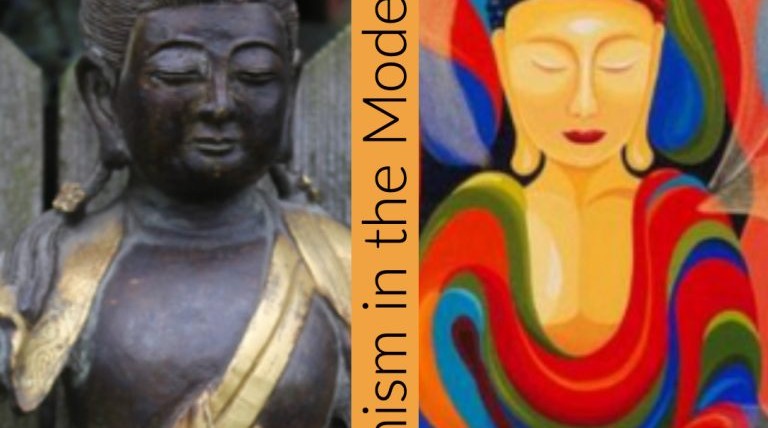A Buddhist’s Bucket List
- Awakening. Number one on many a Buddhist’s list. For a life dedicated to increasing awareness and compassion, and reducing ignorance. My working definition of awakening: My life story matters. There is more to the story. It’s just a story. All three though not necessarily in that order.
- The Galapagos Islands. I want a vacation. A real one. Sharing the earth with soft and spiky wild animals, exploring pristine land and sky. Having intimate time with my husband.
- Hot springs and hot tubs, please. Almost anywhere: Sycamore Hot Springs, the Santa Monica Y, Esalen, Breitenbush, Papagallos, Iceland, my community pool. Healing waters relaxing bodymind.
Pause. Do I put pause on the list? I want more of them. Not only do they slow me down but they allow me to reflect and question my experience. Like right now. Are we even allowed to have a Bucket List in Buddhist practice? In Reflective Meditation?
Let me bring the idea of Bucket List making into the Buddhist teachings on desire. Experiences of wanting, craving, yearning, seeking, greed. Bucket List comes from “kick the bucket” first found in the 1785 dictionary of the Vulgar Tongue as a phrase for dying. It works for me as irreverent humor, holding the punch of uncertainty with our impending death. A Bucket List holds the hopes and dreams, cravings we still have – things we want to accomplish in our lifetime, before death. We get to list out our desires.
In meditation and dharma practice, we learn experientially about desire through an ennobling process (The Four Noble Truths/Tasks); desire is considered a source of our pain, hurt, dissatisfaction, vulnerability (Dukkha). Some traditional teachings have this drilled into our psyche as “the problem” though Buddhism doesn’t have a monopoly on the teaching. Other religions and philosophies are in agreement. In fact, many of the Buddhist texts were first translated by Christian missionaries. Put that into the world’s spiritual melting pot!
Our emphasis in Reflective Meditation is exploring the causes and conditions for desire, any kind. We write about desire from another angle in our book, Reflective Mediation: cultivating kindness and curiosity in the Buddha’s company: “A few years ago I posited another characteristic of our existence, of being alive: we have needs – physical needs, emotional needs, spiritual needs. I need a culture that will support me to discern between my needs and desires, so I can renounce or restrain the latter as part of my recognising how I should live now. While some Buddhists believe they should eliminate all craving and desires, we believe you should investigate the continuum of desires and needs. Some desires are aspirational, some are wholesome and necessary. Cultivate the needs that sustain, and look into and hopefully quiet the desires that harm.”
That’s key. Doing less harm. In meditation and reflection, we have some time and space to be with this continuum. To explore and uncover nuances. To feel the weight of our needs. The weight of our desires. How intricately they’re connected. Otherwise how would we know which needs and desires get us into trouble?
I love hot tubs, # 3 on my list – how about that one? The hot hot bubbling soak. Organic minerals or chlorine. Pounding jets or gentle streams. Every time I see an advertisement for a hot spring, I want to go. I forced my husband to come with me on my last birthday. We paid a small fortune to Sycamore Hot Springs in San Luis Obispo CA so I could have a cabin with a private tub filled from the local sulfur springs. On the porch, under a pine tree, with no prying eyes. Hot tubs are really just baths. Baths are necessary. Purify the body, purify the mind. Iris Ingaslotter from Iceland lives near the Unnaratog which boasts a soak in the northern lights and arctic beauty. I wish. Family and friends could give me gift certificates, cash towards hot tub trips. How creative this desire has become. What lengths am I willing to go for hot tubs? Will it ever wane? Will it increase or lessen development on a spiritual path?
Reflective Meditation practice can be a paradigm for meditating on “how desires mature”. Coming to know how some desires may be shaped and refined, while some may quiet or fall away. But they can’t remain secret to ourselves. If we don’t know our desires, they operate without our knowledge. Allow them to come into meditation sessions without changing the focus or pushing them away into the shadows. A fear I often hear from students is “If I list my desires I will feed them. I’ll be out of control”. We might. For a while. Be aware and beware. We might find ourselves in risky territory with some substances, some places, some people. Self-awareness is important. Vulnerability and self-honesty may be tricky but it’s essential. The desire for a permanent perfect life or self may diminish or disappear by developing and cultivating awareness of our desires.
What might be a desire that has matured within my life?. Something I consider healthy and wholesome. Onward leading, leading towards awakening as we might say in Buddhist parlance. I have another one for my list.
- Spiritual friendship. I have many spiritual friends. Most are virtual. On Zoom. Yet, I still experience loneliness for local friendships in Thousand Oaks, CA. Alive – in person friends. Interested in dharma practice. Available for meditating, walks, going for tea. Exploring the area with an ethical compass. Co-creating rich, deep, conversations about our experience of this valuable life.
Though this reads like a dating profile, it is a sincere desire.
Happy Valentines, from Linda Modaro
Writing, though done solo, is not a solo endeavor. This piece came from a prompt in my writing class with Tracy Katz. Janet Keyes and Judy Butler edited and gave heart warming feedback. Nelly loves it, too.


